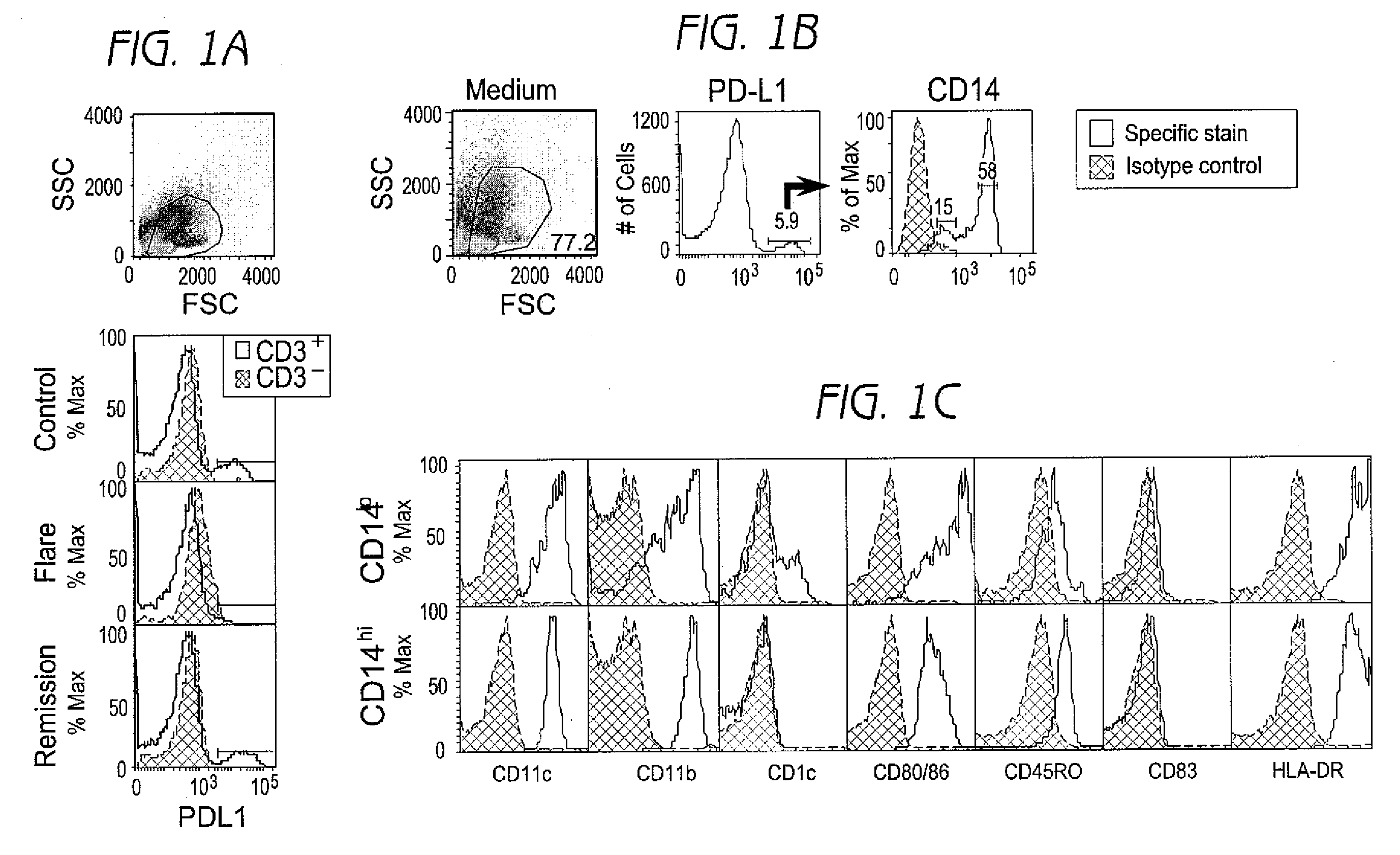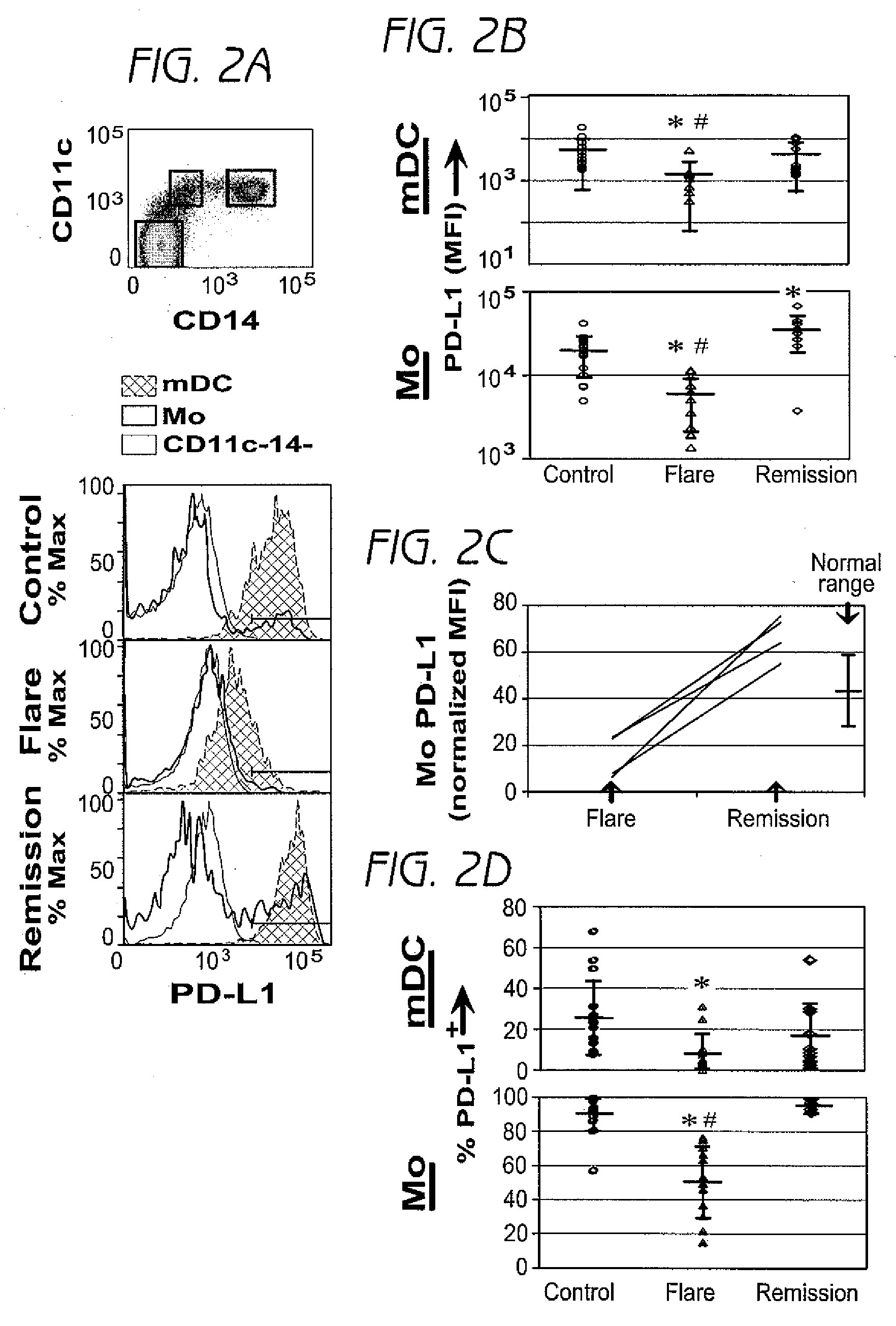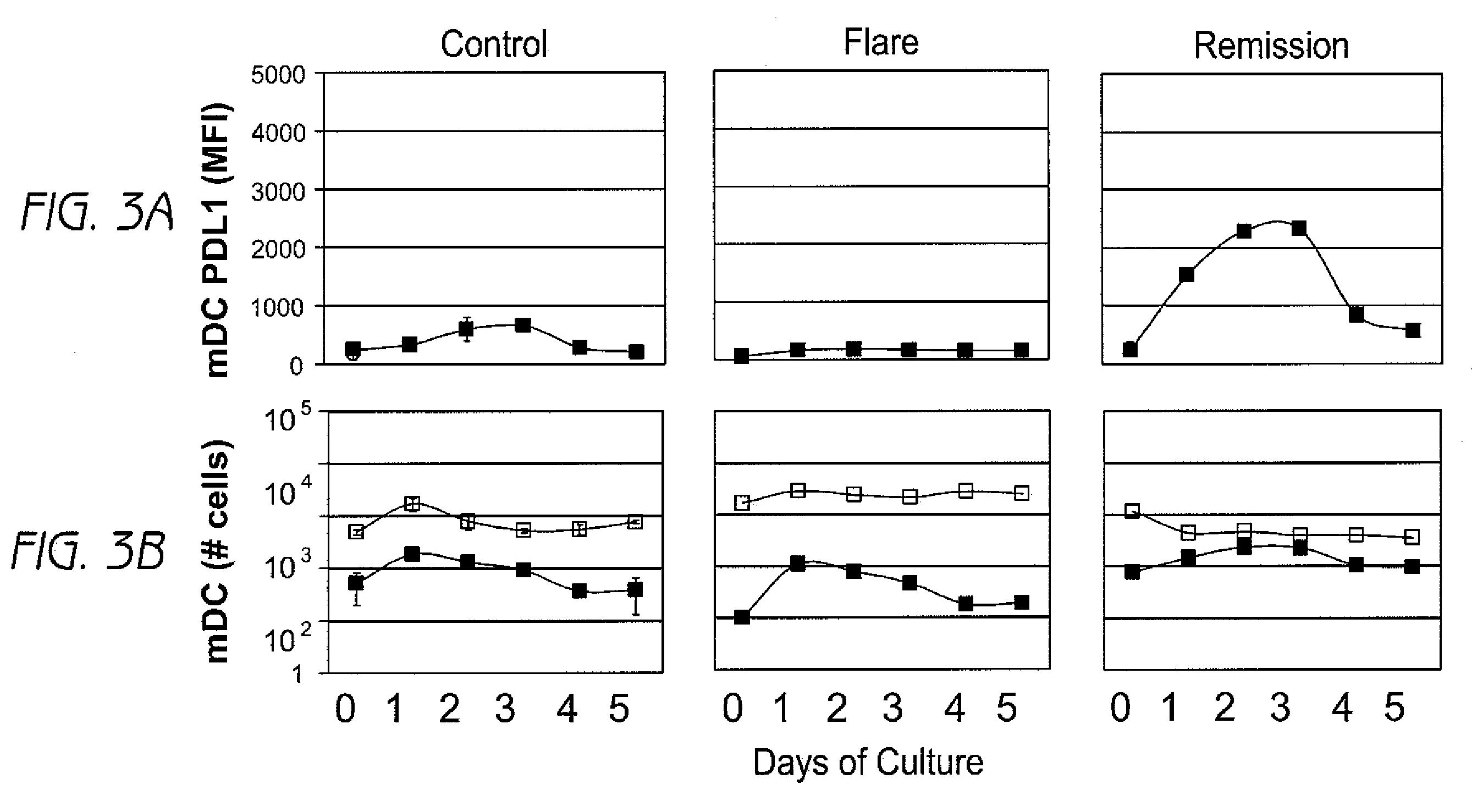Detection and treatment of autoimmune disorders
a technology for autoimmune disorders and pd-l1, which is applied in the field of ligands, can solve the problems of increased infections with opportunistic organisms, bone marrow suppression, and patient compliance to a dosage regimen, and achieve the effect of inducing or increasing pd-l1 expression
- Summary
- Abstract
- Description
- Claims
- Application Information
AI Technical Summary
Benefits of technology
Problems solved by technology
Method used
Image
Examples
example 1
PD-L1 Protein Levels Downmodulated in Control Mo Using Specific siRNA
[0106]In this model, siRNA technology was used to diminish mRNA for PD-L1. Normal PBMC were obtained from healthy volunteers and frozen in liquid nitrogen. At the time of experiments, cells were thawed, washed, and diluted to 1-2×106 cells / ml in culture medium consisting of RPMI 1640 supplemented with L-glutamine (CellGro), 10% heat-inactivated A / B human serum, 1% penicillin / streptomycin (CellGro), and 0.1% beta-mercaptoethanol. Cells were plated in round-bottom 96-well plates (Corning Costar) and incubated at 37° C. in a humidified cell chamber with 5% CO2. After a four-hour rest period, total PBMC were incubated with Mo nucleofection buffer (Amaxa) plus specific anti-human PD-L1 siRNA or control siRNA (sc-39699, Santa Cruz Biotechnology, Inc.) and nucleofected as per the manufacturer's protocol (Amaxa).
[0107]PBMC were returned to the incubator and cell surface PD-L1 levels determined by flow cytometry 24 hours la...
example 2
PD-L1 Protein Levels were Increased in APC by Inhibition of Caspase Activity
[0117]PBMC were cultured as above and a duplicate well of each sample treated with 50 uM OPH. PD-L1 upregulation on APC was confirmed in these cultures, and an aliquot of each sample was incubated further in order to allow interaction of APC with autologous T cells in culture. Three days later, the cells were fixed and permeabilized, and the T lymphocytes were assayed for intracellular expression of the regulatory T cell protein, Foxp3.
[0118]It was found that OPH increased PD-L1 expression on the surface of both Mo and mDC at day one. Identification of endogenous Treg in the PBMC cultures using Foxp3 protein revealed not only fewer Treg in lupus PBMC, but also less Foxp3 protein per cell, indicating that development and / or survival of Treg was abnormal in SLE. Although cultures treated with OPH expressed significantly higher amounts of PD-L1 on the surface of APC, the level of Foxp3 expression in both health...
example 3
PD-L1 Signaling was Inhibited Using Anti-PD-1 Antibodies
[0119]Soluble anti-PD-1 antibody was utilized to block PD-L1 signaling in autologous PBMC cultures, and the effect on T cell cytokine production was evaluated after five days of incubation. It was found that soluble anti-PD-1 antibody at this concentration did not significantly affect intracellular production of IFN-γ, TNF-α, or IL-17 in T cells (see FIG. 8), but this may have also been due in part to the fact that the T cells were minimally stimulated, as they were responding to autologous APC. These experiments did demonstrate the ability to detect small changes in T lymphocyte cytokine production among total PBMC. PBMC from eight healthy individuals were incubated with autologous APC in the presence of soluble control IgG or anti-PD-1 antibody to assess the effect of blocking PD-L1 signaling on T cell cytokine production. After five days, CD4 and CD8 T cells were identified and assayed for the presence or absence of intracel...
PUM
| Property | Measurement | Unit |
|---|---|---|
| surface | aaaaa | aaaaa |
| surface staining | aaaaa | aaaaa |
| MFI | aaaaa | aaaaa |
Abstract
Description
Claims
Application Information
 Login to View More
Login to View More - R&D
- Intellectual Property
- Life Sciences
- Materials
- Tech Scout
- Unparalleled Data Quality
- Higher Quality Content
- 60% Fewer Hallucinations
Browse by: Latest US Patents, China's latest patents, Technical Efficacy Thesaurus, Application Domain, Technology Topic, Popular Technical Reports.
© 2025 PatSnap. All rights reserved.Legal|Privacy policy|Modern Slavery Act Transparency Statement|Sitemap|About US| Contact US: help@patsnap.com



